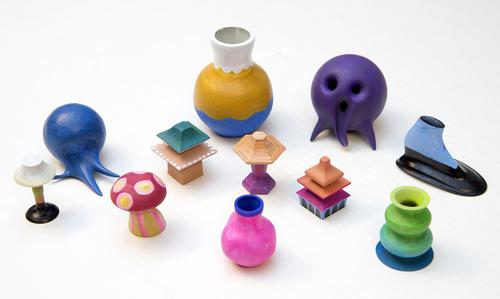Video: Purdue Researchers Develop Hands-On 3D Digital Modeling Tool
July 22, 2013

Designers typically use 3D modeling software to create designs using a mouse and a computer screen. But what if they could also use hand gestures similar to how they might actually sculpt a geometric-shaped design to create new designs?
Now they can, thanks to researchers at Purdue University, who have created a hands-on design tool called Shape-It-Up that interprets gestures and movements, thus enabling designers to create and modify 3D shapes through the natural user interface of their own two hands.
To use the tool, a designer would create shapes in a computer by interacting with a virtual workspace through hand gestures and movements, which are observed and interpreted by custom computer algorithms and a depth-sensing camera. The shape is then displayed on a large-screen monitor.

The invention of Karthik Ramani, the Donald W. Feddersen professor of mechanical engineering at Purdue's School of Electrical and Computer Engineering, and a team of graduate and postdoctoral researchers, will be especially helpful to designers who find conventional CAD work nonintuitive and struggle to design in this way, Ramani told Design News in an email. "Our concept is positioned to change CAD in the future to be more human-centric," he told us. "We will redefine it to be more human-centric and democratize design, which is currently accessible to only a few."
Ramani said Shape-It-Up, which its inventors initially began working on four years ago, is not meant to replace or supplement CAD, but to allow designers -- both professional and hobbyist -- to work in a more natural way as part of their design process.
"The benefits enable anyone to become a designer," he told us. "It makes it easy for one to learn -- even kids are able to use our tool in tests. The benefits span designers, artists, manufacturers, game developers, and many others we have not yet imagined."
Specifically, Shape-It-Up leverages the Microsoft Kinect camera, which senses 3D space and can track a person's body and its movements without the use of handheld electronics. Researchers coupled this with algorithms they developed for recognizing hand gestures, as well as for understanding that the hand is interacting with a particular shape. The algorithms also can modify the shape in response to the hand interaction.
The National Science Foundation's Innovation Corps and Accelerating Innovation Research programs supported the development of the tool as a way to address the limitations of conventional CAD tools for creating products with geometric shapes.
Ramani and his team are currently working with industry partner ZeroUI to improve the tool's depth-sensing cameras so the tool can eventually be offered commercially to "make a real-world impact," he said.
Related posts:
About the Author(s)
You May Also Like



